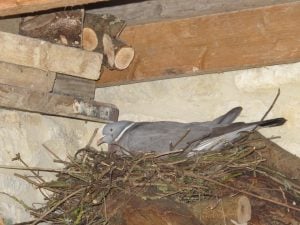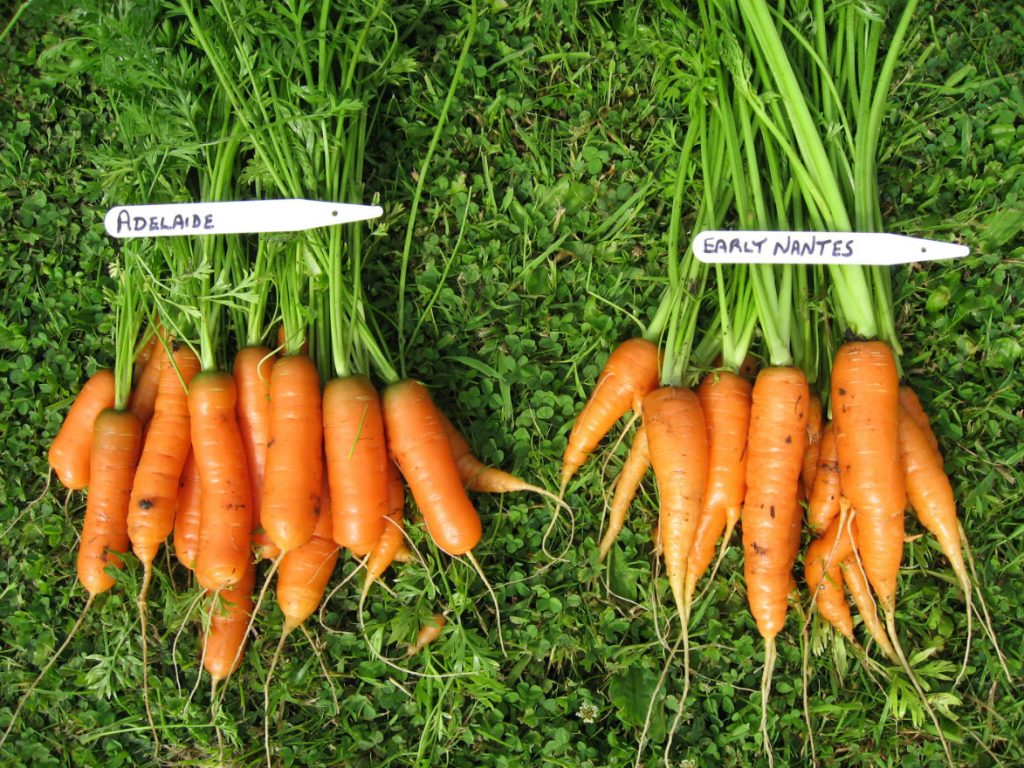It may be the year of the referendum for you, but for me it’s the Year of the Pigeon, because I have had three permanent residents in my garden. I wouldn’t mind if it was a pigeon pair and a baby, that might be quite nice, but it’s one lady and her two warring suitors. They have frolicked on my slate roof, which is far too slippery-slidey for pigeon copulation despite it only lasting seconds. They have fought on my lawn and spilled over into the border, ravaging my flowers rather than each other. They have stalked the ground underneath the bird feeders, so much so that the lawn has become a muddy patch.

However, after months of rivalry and noisy wing flapping, I’m now left with just two so relative peace has been restored. Or I thought it had! A few days ago I pulled back the blinds and saw my pigeon pair shuffling up and down my rows of carrots, or rather my missing rows of carrots, with all the skill of Fred Astaire and Ginger Rogers performing a tippy-tappy dance routine. They were pecking through the wire netting and, as they did so the penny dropped. I now realise why my carrots have failed.
I had blamed the cold nights and the wet weather because, like all tap-rotted plants, carrots prefer warm temperatures and drier conditions. But now I’ve realised that they are being consumed for breakfast and possibly dinner and tea. I’m already on my third sowing, having bought at least 10 packets so far, and I’m wondering if I should just buy some ready grown carrots from the supermarket instead. I’m driven on though, because there’s nothing quite as a tasty as a freshly harvested carrot. And my pigeons obviously agree. I’ve beefed up the defences ( and yes sow yet more seeds) but that’s it! It’s the last chance saloon as far as a carrot crop goes.
Wild carrots, with twisted stringy roots, can be found all across Asia and Europe, but in their stronghold of Central Asia root colour varies greatly. Purple carrots, which are thought to come from Afghanistan, where the Himalayan and Hindu Kush mountains meet, soon became domesticated in the adjacent regions of Russia, Iran, India, Pakistan and Anatolia. These are hot areas in summer and I find the purple F1 hybrids, such as ‘Purple Haze’ and ‘Purple Sun’, do much better in warmer summers than cooler ones.
Purple carrots taste sweet and nutty and my discerning grandchildren love them. They have an orange core, but the outer purple zone is full of anthocyanin, a flavonoid found in lots of purple fruits. It’s been suggested that anthocyanins possess anti-inflammatory and anti-carcinogenic properties, reducing cardiovascular disease prevention, obesity and diabetes. Orange carrots, full of beta-carotene, are thought to be descended from paler-rooted wild subspecies grown in the Mediterranean. In the Second World War it was said that RAF pilots could see in the dark because they ate orange carrots every day. It was in fact a new RADAR system, although beta-carotene does nourish the eye.
The carrot’s been around a long time. It has been grown in British gardens since the 1500s and it’s likely that at first the roots came in a rainbow of colours. They were introduced from the Middle East and the Spanish Moors were growing carrots by 1100 ( from Bill Law’s excellent Spade, Skirret and Parsnip- the Curious History of Vegetables). By 1300 the Germans and Dutch were also growing carrots as a crop and in 1720 Bill Laws tells us that the first Long Dutch cultivar was produced. Some say it was loyalty to the House of Orange that led to the production of a plump, orange carrot. I say it was happy coincidence.
Whatever the reason, the Dutch have just the right sort of soil, deep and sandy and that soil is replicated in parts of Eastern England. We produce 700,000 tonnes of carrots each year from 9,000 hectares. All our early carrots come from Suffolk, Norfolk and Cambridgeshire. In the 1820s, the sandier areas of Surrey provided Londoners with early carrots, before the land went for housing.

On any drive eastwards across England you will see verges full of wild carrot (Daucus carota). This umbellifer has flat-topped white flowers that gather themselves together in late summer, like a witch’s besom. The flowers change sex as they develop and the stamens release their pollen before the stigma of the same flower is receptive. This aids cross pollination. The oldest flowers are near the edge and the youngest flowers in the centre and each floret opens in sequence, over at least a month, or even two. Pollinators tend to be small flies and hoverflies. Mysteriously there’s one dark flower in the exact middle.
The ‘Dutch Long’ may have been the first plump orange carrot named, but when it comes to varieties it was the 19th century French kitchen gardeners who gave us Nantes and Chantenay varieties and they are still with us today. My early sowings always contain the blunt-ended ‘Nantes Early’, because it crops relatively quickly, and sometimes the more conical ‘Chantenay’. They will often crop within 3 months, in pigeon-free conditions. I often make a late sowing in late July and I always use ‘Nantes Early’ because it will hopefully mature before the weather deteriorates.
Other good orange carrot varieties, ones given AGMs in recent years, include ‘Adelaide’, ‘Napoli’, ’Prima’, ‘Trevor’, ‘Yukon’ and ‘Marion’. There will always be years when carrots do not grow as well as you might hope they will, but that is vegetable gardening. It’s swings and roundabouts – hopefully without any pigeons on board.



